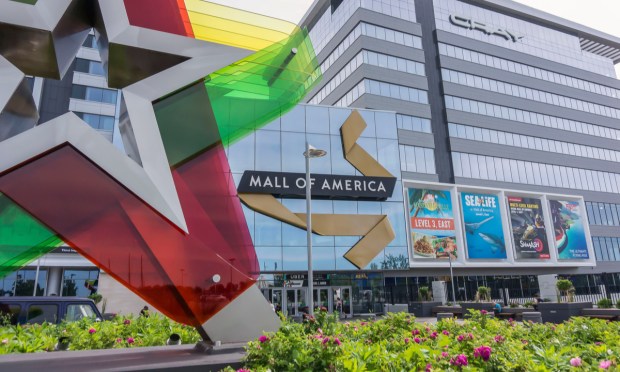Mall of America: Consumers Want to Be Entertained

Nestled in Bloomington, Minnesota, Mall of America takes the shopping center concept to a whole new level. It is an expansive retail and entertainment complex that provides consumers with a distinct experience compared to traditional malls. Known for its size, diverse attractions, and innovative retail approach, Mall of America stands out as a unique destination for shoppers and visitors.
In an interview with PYMNTS, Jill Renslow, chief business development and marketing officer at Mall of America, delves into the strategies the company uses to keep the mall’s momentum rolling and the insights gained from its customer base.
As we near the holiday season, retailers are working hard to boost consumer spending amid the economic challenges. With that, a big question comes to mind: Are consumers shopping?
“People are definitely shopping,” Renslow says.
In fact, according to Renslow, Mall of America visitors are doing more than shopping: They are participating in a wide array of activities such as dining, recreation, and various forms of entertainment, fostering a dynamic and lively atmosphere.
Renslow also points out that this year stands out as Mall of America witnesses robust visitor counts and consumer spending.
Getting Consumers to Spend
To get consumers to engage and spend, Mall of America is constantly looking to enhance the in-store shopping experience, striking a balance between convenience and uniqueness in a time dominated by online retail, according to Renslow. An example of this is leaning into trends and moments consumers are loving in real time; one of the moments includes Barbie.
“Malibu Barbie Café opened just last Friday, which was perfectly timed, especially considering the enthusiasm of Barbie fans,” Renslow says.
“It’s been a lot of fun for us as a brand to exhibit this flexibility and introduce such experiences, even if they aren’t meant to be permanent fixtures. The Barbie cafe is intended as a pop-up experience, and we relish the opportunity to host it in our space. This also allows the brand to test how it resonates within this marketplace and among our customers.”
Attractions such as this make sense, as Renslow notes that Mall of America attracts 32 million visitors each year, making it an attractive destination for brands looking to introduce special products. In addition to shopping, the mall features a 7-acre theme park, setting it apart in the retail industry.
Mall of America blended retail and entertainment three decades ago and maintains its focus on finding brands that can enhance the consumer experience, acknowledging the importance of a brand being consistently strong online while delivering something unique in-store.
Renslow highlights the mall’s awareness of the economic climate, where value-conscious consumers are looking for savings, especially as the holiday season draws near.
The mall caters to both local shoppers and tourists, capitalizing on Minnesota’s exemption from sales tax on clothing and shoes to attract both domestic and international visitors. Recognizing these distinct consumer segments, Mall of America tailors its marketing messages to create meaningful connections with each group.
Data Tells What Consumers Want
Renslow notes that the pandemic triggered a widespread reevaluation of strategies and methods. This period of contemplation enabled an examination of established practices. The overarching insight was the persistent yearning to return to physical spaces, especially for retail and dining experiences.
With this in consideration, Mall of America employs a data collection approach, using diverse measurement tools to improve the customer experience and enhance efficiency. For example, they monitor foot traffic through methods such as car counters and people counters, enabling them to analyze traffic patterns daily, weekly and seasonally, as well as how external factors like weather influence visitor behavior.
“We do a lot of testing and learning here at Mall of America, which allows us to get things in front of the customer, and we kind of look at our building as the largest living focus group in the world because we go and talk with customers and learn from them,” Renslow says.
Once visitors are inside the mall, Wi-Fi data is leveraged to gain insights into visitor frequency, origin and preferences. Digital directories aid in understanding visitor behavior, highlighting brand combinations that customers favor during their visits. This data-driven approach extends to identifying brands that potential visitors are searching for but that the mall currently does not house.
Renslow also points out that the launch of the “Mall of America Insiders” membership program has a dual function. It delivers extra value to participating customers and provides insights into their shopping habits and preferences, enabling the mall to customize their experiences more efficiently.
What Consumers Want
So, what do consumers want in retail? They want an experience. Therefore, as brands explore physical retail, Renslow suggests they should consider alternative success metrics beyond just sales.
“Now, with the shift in the omnichannel strategy for many retail brands, they are also considering the value of the brand itself and its visibility within the building,” Renslow says.
“When you look at brands like Lululemon, they’ve done an amazing job of having that consistent brand experience while distinguishing themselves in physical spaces by adding features such as the Fuel Up Bar, meditation rooms, and workout areas, creating an engaging environment. So, we will continue to look for those brands that really differentiate themselves in the brick-and-mortar space, and we’ll also look for mixed uses that complement our existing buildings.”

